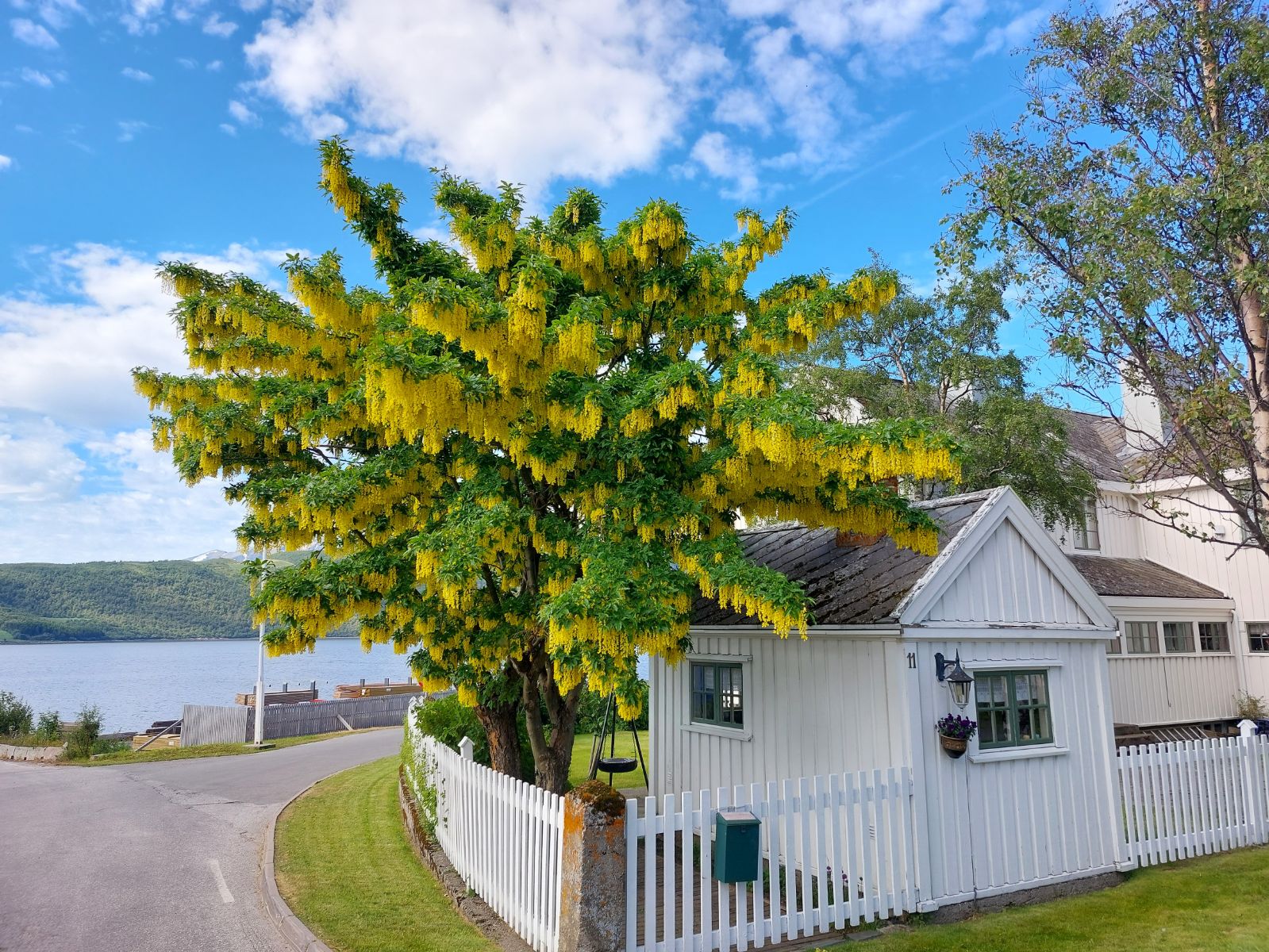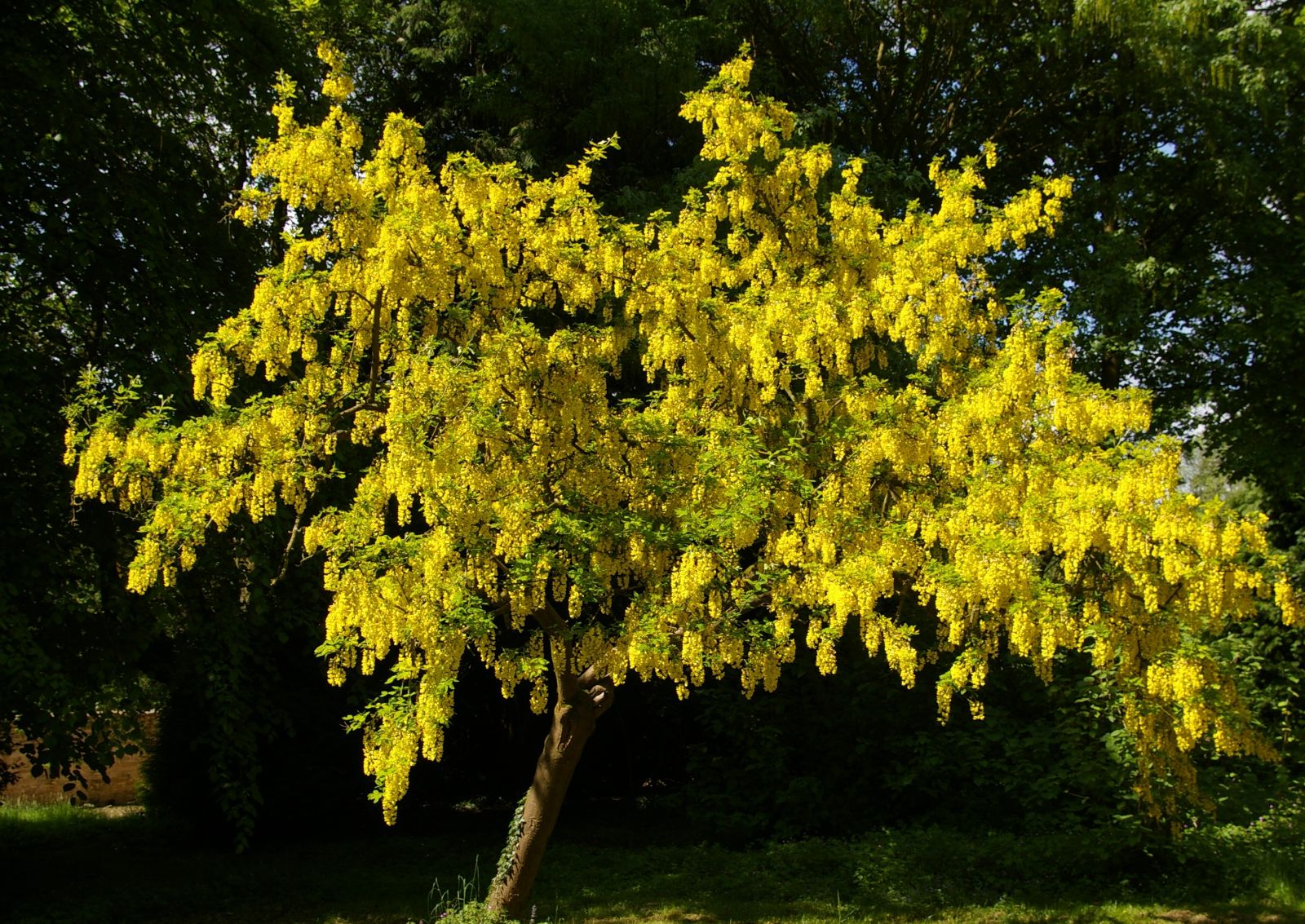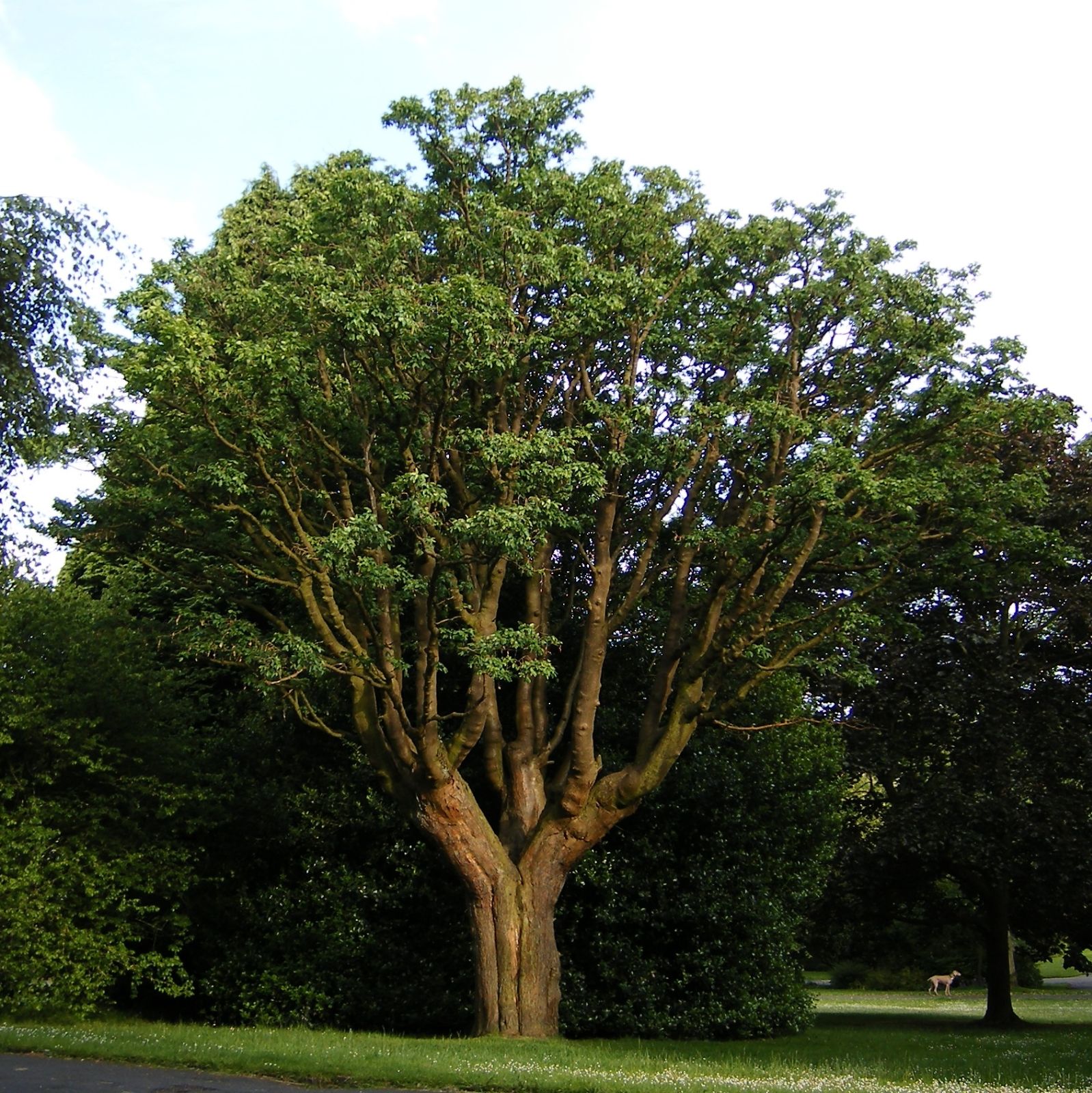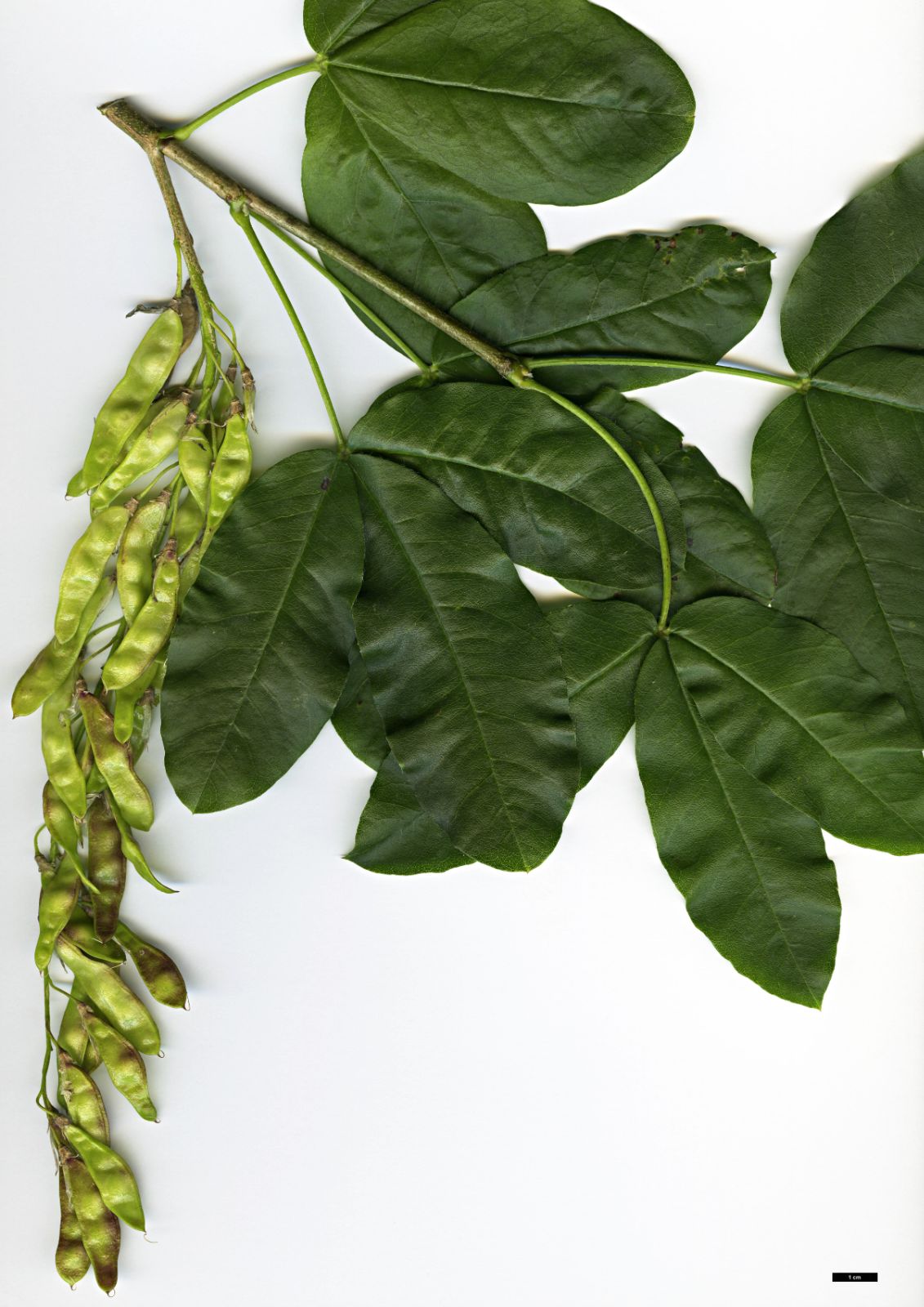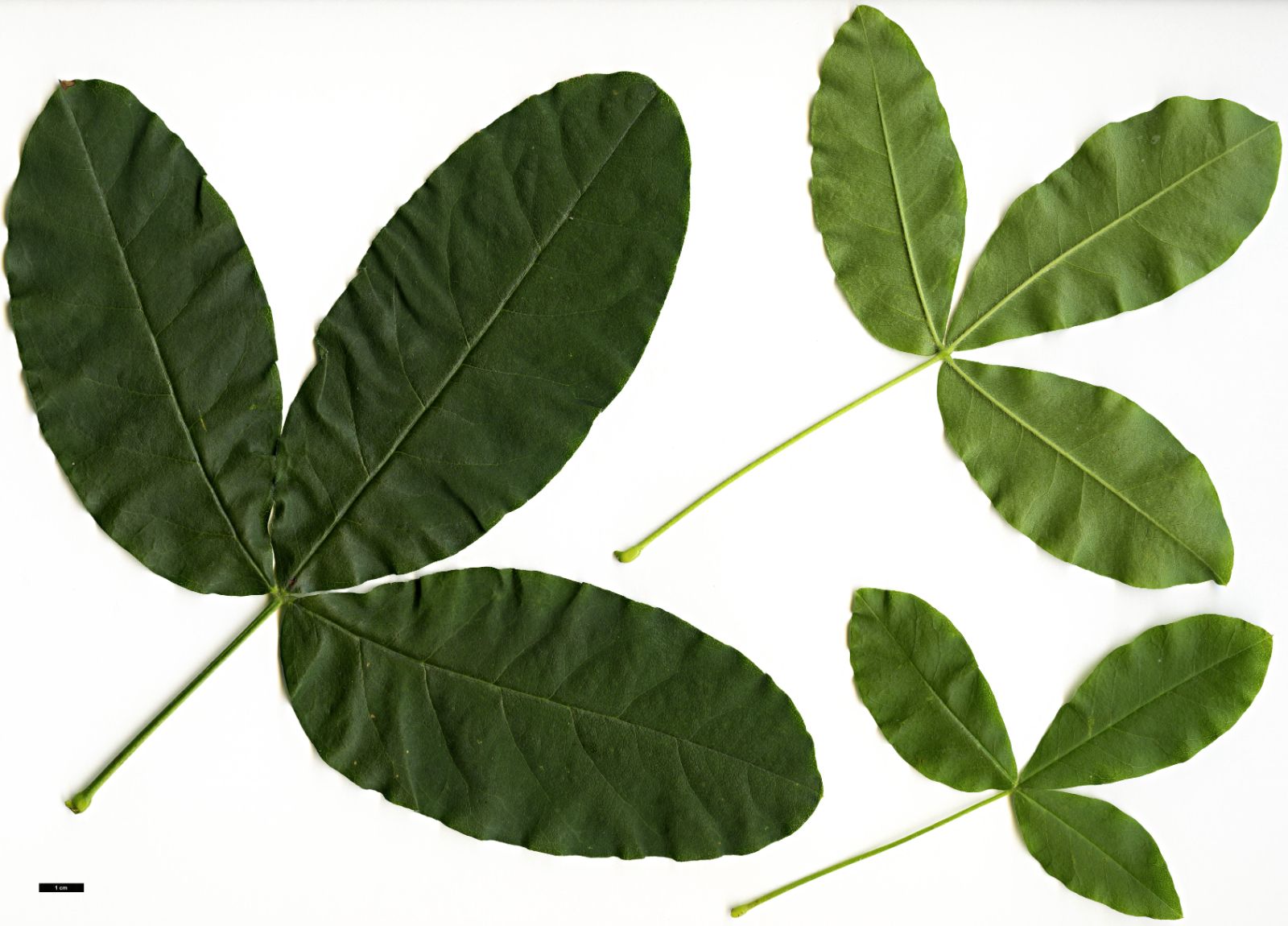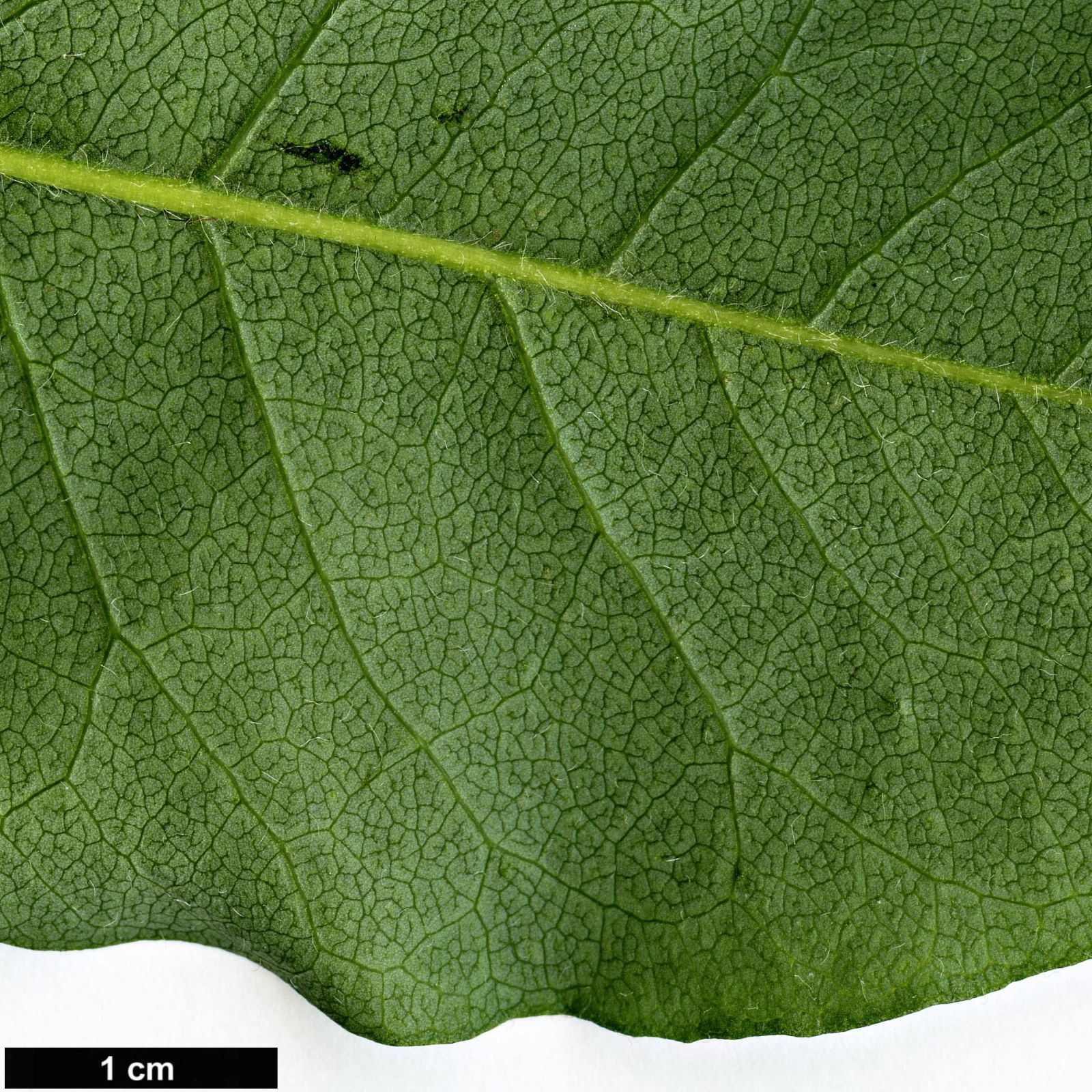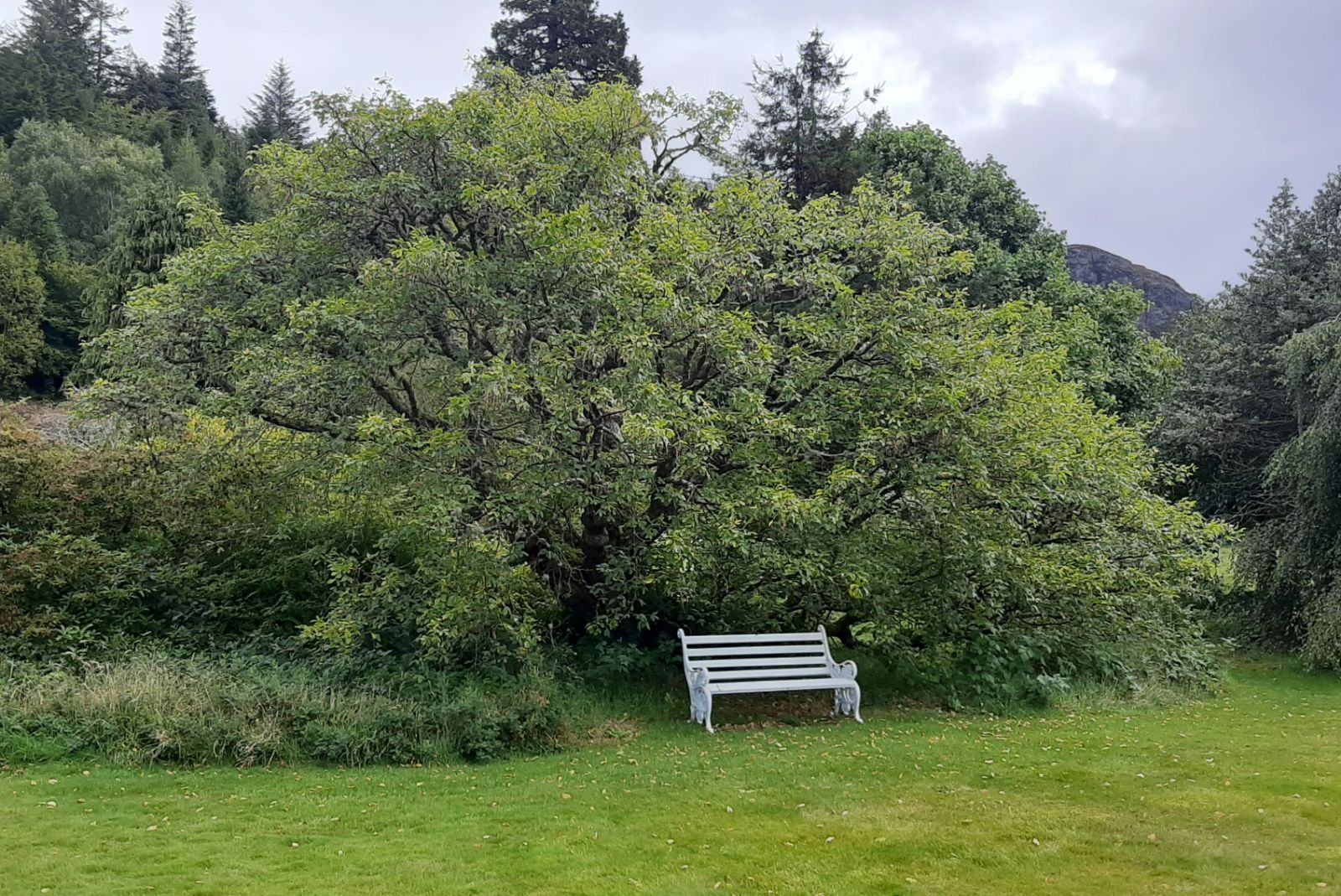Laburnum alpinum
Credits
Article from Bean's Trees and Shrubs Hardy in the British Isles
Recommended citation
'Laburnum alpinum' from the website Trees and Shrubs Online (treesandshrubsonline.
Infraspecifics
Other taxa in genus
A deciduous tree 20 ft (rarely 30 ft) high, with usually a short, sturdy trunk. Young stems green, with a few spreading hairs at first, later glabrous. Leaves trifoliolate, with a stalk 1 to 2 in. long; leaflets oval or obovate, 2 to 4 in. long, deep green, not so downy beneath as in L. anagyroides. Racemes pendulous, slender, 10 to 15 in. long, carrying numerous golden-yellow flowers, each 3⁄4 in. long on a thin stalk 1⁄4 to 1⁄2 in. long; both the flower-stalks and the main-stalk of the raceme are glabrous or thinly downy. Seed-pods 2 to 3 in. long, flat, with the upper seam (suture) distinctly winged and forming a knife-like edge, glabrous.
Native mainly of the southern Alps, but also occurring wild in the northern Apennines, N.W. Yugoslavia, and southern Czechoslovakia. It is found in damper places than the common laburnum and is not confined to limestone soils. It has been cultivated in the British Isles for at least 350 years but is not a native. It was long confused with the common laburnum until its distinctness was noted by Miller in his Dictionary. It differs in the following characters: young stems glabrous except when quite young; leaflets larger and less hairy; racemes longer and denser, opening their flowers two to three weeks later (early June); upper seam of pod flattened out into a thin edge in place of the thickened one of L. anagyroides. L. alpinum is undoubtedly the superior species for gardens.
A botanical distinction has been made between f. macrostachys (Endl.) Koehne, with long racemes and large leaflets, said to be commoner in the west; and f. microstachys (Wettst.) Koehne, with shorter racemes, said to be commoner at the eastern end of the range of the species, in sunny places. But the former is really synonymous with the type. Other variants are:

